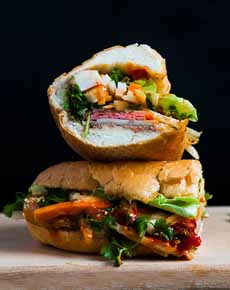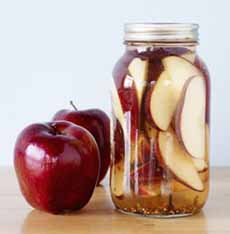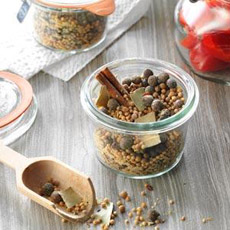TIP OF THE DAY: Make Pickled Vegetables (Pickles!) For Sandwiches, Burgers & Plate Garnish
|
Sandwiches have always offered a familiar platform for creative signaturization, says Flavor & The Menu, a restaurant trend magazine for chefs. Good chefs play with each layer to create tempting flavor combinations. What meat, cheese, and/or vegetables; what type of bread; what condiments; what raw vegetables (lettuce vs. arugula, tomatoes vs. roasted red peppers, for example). And what pickled element. Pickled vegetables have long been part of sandwiches around the world. Vietnamese banh mi, for example, is typically pork on a long with pickled radishes, carrots, onions and cilantro or other fresh herbs. In the U.S., “pickle” has long meant pickled cucumber. It’s time to expand the vision. Pickles beyond cucumbers are now finding their way into, onto, and to the side of sandwiches. Many vegetables and fruits can be pickled. They provide bright acidity, a pleasing crunch and a pop of color. “Fried chicken sandwiches practically beg for pickled onion.” says F&TM. “Fried fish sandwiches call out for pickled peppers, like jalapeño or serrano. Porchetta sandwiches need a pickled element to cut through the richness of the meat. Pickled red onion, radish or even peach work really well here.” Beyond sandwiches and burgers, use the pickles in salads, as cheese condiments or on the dinner plate as a garnish. You can pickle vegetables in as little as 2 hours; or keep them in the brine for up to two weeks. Since these pickle aren’t sterilized in a water bath, they can begin to break down if kept much longer (not that you’ll have any difficulty devouring them in a day or two). 1. What to pickle. Try anything and everything from baby carrots and cucumbers to summer squash, spring onions and jalapeños (great on burgers and hot dogs). You can also pickle your favorite fruits. You can pickle just about any vegetable. Asparagus, baby corn, beets, carrots, green beans (“dilly beans”), okra, pearl onions and sliced onions, snap peas and string beans are popular. But equally delicious are: 3. Flavor the brine. Use your favorite spices in the brine. Dried pickling spices include some or all of the following: allspice, bay leaf, cinnamon, cloves, coriander seeds, crushed red pepper flakes, ground ginger, mustard seeds and peppercorns. Here’s the recipe to mix your own, from Taste Of Home. You can also add flavor with garlic cloves and less expected flavors such as: |
|
|
|
The blander the vegetable (cucumber, e.g.) the stronger the spices required. You can add sugar and or salt to the brine as well, but common wisdom is to first make a batch without them first. You may get all the flavor you want without adding them.
|
||







